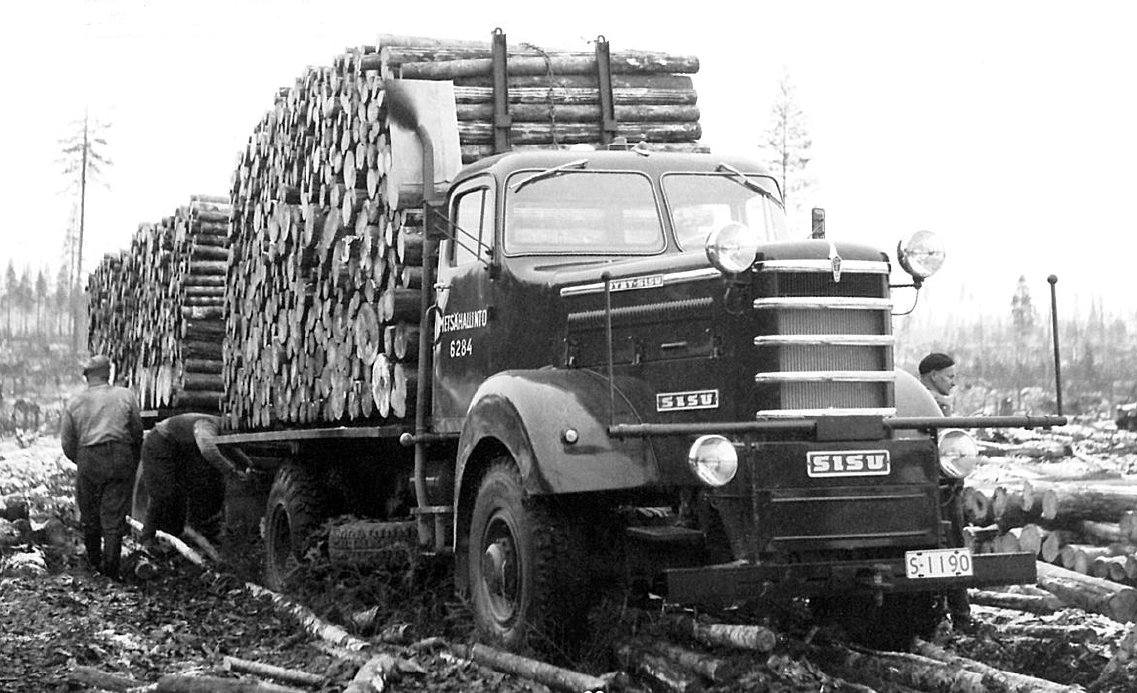|
Sisu K-44
Sisu K-44 is a three-axle 4×4+2 driven lorry made by the Finland, Finnish heavy vehicle manufacturer Sisu Auto, Suomen Autoteollisuus (SAT) from 1959 to 1965. The most usual applications were for log transportation and earth moving vehicles. The K-44 was noted for its excellent gradient capabilities. The legally permissible maximum vehicle payload was between 7 800 and 11 750 kg: with a trailer this increased to 20 000 kg. The K-44s were powered by Leyland diesel engines with power outputs of between 85.8 and 156.7 kW. The K-44 was replaced in 1965 by the Sisu K-145, K-145. Development Single axle semi-trailers were commonly used for log transportation in Finland in the 1960s. The maximum axle load of the existing 4×4 Sisu K-40 was often exceeded in logging work. The solution was a truck incorporating the addition of a non-driven third axle at the back, paired in a axle#Structural features, tandem axle with the rear driven axle. The new model, t ... [...More Info...] [...Related Items...] OR: [Wikipedia] [Google] [Baidu] |
Sisu Auto
Sisu Auto is a truck manufacturer based in Raseborg, Finland. Its name comes from the Finnish word ''sisu'' meaning guts, grit and determination. Sisu Auto has a subsidiary company, "Sisu Defence", producing high mobility tactical vehicles for military use. Production Civil trucks The currently available Sisu Polar variants are with 3, 4 or 5 axles in various layouts. The applications are: *Sisu Crane - crane trucks *Sisu Rock - dump trucks *Sisu Roll - hook loader *Sisu Timber - timber trucks *Sisu Works - road maintenance trucks *Sisu Carrier – heavy machinery carrier Military trucks *Sisu 4×4 *Sisu 6×6 *Sisu 8×8 *Sisu 10×10 History 1931 to 1939 The company was established on 1 April 1931 as Oy Suomen Autoteollisuus Ab (SAT). It originated from two neighbouring Helsinki-based automobile coach builders, Autokoritehdas and Autoteollisuus-Bilindustri, both of which had fallen into financial troubles by the beginning of the 1930s. The banks, which were funding bo ... [...More Info...] [...Related Items...] OR: [Wikipedia] [Google] [Baidu] |
